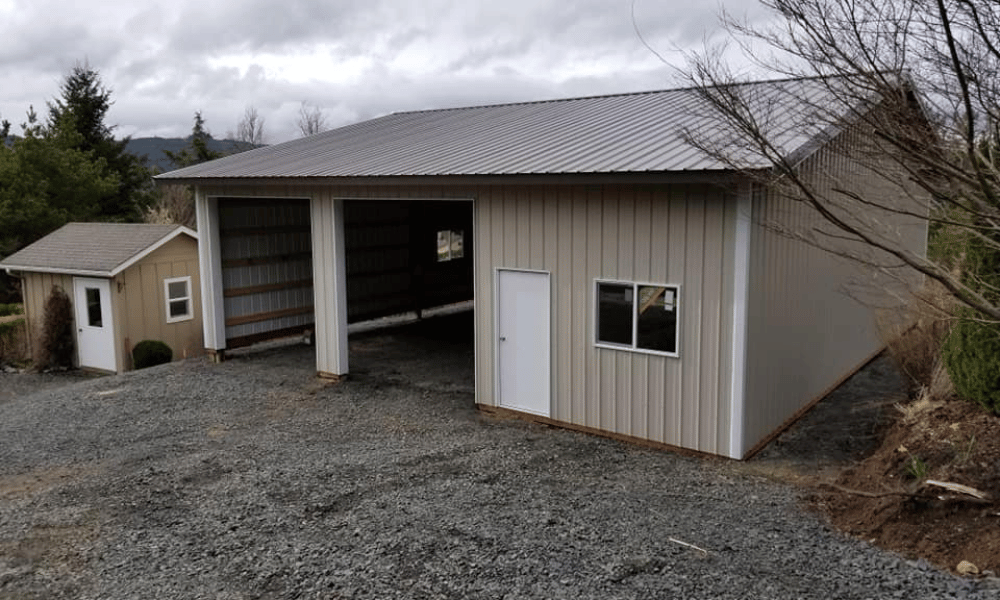Introduction
When it comes to creating a functional space, whether it's your home, workplace, or a pole barn, lighting plays an indispensable role. The right lighting fixtures not only enhance visibility but also contribute significantly to the overall organization of the area. Poor lighting can lead to frustration and decreased productivity, while well-thought-out illumination can make tasks easier and spaces more inviting. In this article, we'll delve into various aspects of choosing the right lighting fixtures, ensuring you have all the knowledge needed to maximize efficiency and comfort in your surroundings.
Choosing the Right Lighting Fixtures to Enhance Visibility and Organization
Selecting appropriate lighting fixtures is crucial for any environment. You might wonder why it matters so much. Well, here’s the lowdown: lighting affects mood, productivity, and even safety. A well-lit area reduces eye strain and enhances clarity, making it easier for you to manage tasks efficiently.
Why Lighting Matters
The Impact of Light on Mood
Lighting has a psychological impact that cannot be overlooked. Studies show that exposure to natural light boosts mood and productivity. When selecting fixtures, consider how different light temperatures (warm vs cool) can affect emotions.
Productivity Boosters
Have you ever noticed how a dimly lit room can sap your energy? Bright spaces are known to enhance concentration levels. This is especially true in environments like offices or workshops.
Types of Lighting Fixtures
Ambient Lighting
Ambient lighting provides overall illumination in a space. It serves as the foundational layer of light that allows you to navigate your environment safely.
- Examples: Ceiling fixtures, chandeliers Best for: Living rooms, kitchens
Task Lighting
Task lighting focuses on specific areas where activities take place—think reading lamps or under-cabinet lights in kitchens.
- Examples: Desk lamps, work lights Best for: Offices, workspaces
Accent Lighting
Accent lighting adds drama and highlights certain features within a room. It’s often used for decorative purposes.
- Examples: Spotlights, wall-mounted fixtures Best for: Art displays, architectural features
Lighting Styles to Consider
Modern Industrial Style
This style combines functionality with aesthetics. Think exposed bulbs and metal finishes that suit pole barns perfectly.
Traditional Style
For those who prefer classic aesthetics, traditional fixtures offer elegance with ornate designs.
Understanding Lumens vs Watts
What Are Lumens?
Lumens measure brightness; the higher the lumens, the brighter the light will be. When selecting lights https://heat-teach.uncrn.co/blog/cost-effective-solutions-the-financial-benefits-of-choosing-a-pole-building/ for visibility and organization in your pole barn or workspace, aim for higher lumens.
Why Watts Matter Less Now
In modern lighting technology, particularly with LED bulbs, watts are less indicative of brightness than lumens are. It’s essential to focus on lumens when aiming for effective illumination.
Choosing LED Lights for Efficiency
LED lights are among the most efficient options available today:
- Energy Savings: Up to 80% less energy than incandescent bulbs Longevity: Last up to 25 times longer Versatility: Available in various colors and styles
Smart Lighting Solutions
With technology advancing at lightning speed, smart lighting offers convenience:

- Control via Apps: Adjust brightness from your smartphone. Scheduling Features: Set timers so lights turn on/off automatically.
Essential Considerations When Choosing Fixtures
Room Size Matters
Larger spaces require more powerful fixtures or multiple sources of light to avoid dark corners that can hinder visibility.
Ceiling Height
High ceilings require different types of fixtures than standard ones; consider pendant lights or chandeliers if you have high ceilings in your pole barn or workshop.
Color Temperature – What Works Best?
Color temperature is measured in Kelvins (K):
Warm White (2700K–3000K): Creates a cozy atmosphere; ideal for living areas.
Cool White (4000K–5000K): Offers clarity; best suited for workspaces like garages or studios.
Placement Strategies for Maximum Effectiveness
To truly enhance visibility and organization through proper lighting:
Identify zones within your space. Place task lights where they will be most beneficial. Avoid shadows by positioning ambient fixtures strategically.Maintenance Tips for Longevity
Proper maintenance ensures longevity:
- Regularly dust off bulbs and fixtures Replace burnt-out bulbs promptly Check wiring periodically
Frequently Asked Questions (FAQs)
1. What type of lighting is best for a pole barn?
Opting for bright LEDs combined with ambient light works wonders in pole barns due to their size and often utilitarian purpose.
2. How many lumens do I need per square foot?
For general purposes, aim for around 50 lumens per square foot; however, task areas may require 100 lumens or more.
3. Are smart lights worth it?
Absolutely! They provide convenience and energy savings over time while allowing customization based on user preferences.
4. Can I mix different types of bulbs?
Yes! Mixing ambient with task or accent lighting creates depth but ensure compatibility in color temperatures between them.
5. What about outdoor lighting considerations?
Safety is paramount here! Consider motion-sensor lights alongside soft ambient options that illuminate pathways effectively without being blinding.
6. How do I know which fixture fits my style?
Consider existing decor themes; choosing complementary styles ensures consistency throughout your space.
Conclusion
Choosing the right lighting fixtures is not just about aesthetics—it's about creating an environment conducive to productivity and organization while enhancing visibility across spaces such as pole barns or homes alike. With various types available—from ambient lights that fill an area to task-specific solutions—you’re bound to find something perfect for every need outlined above!
Remember: good lighting transforms spaces! So take some time planning out your selections thoughtfully—they’ll pay dividends down the road by improving both function AND form!